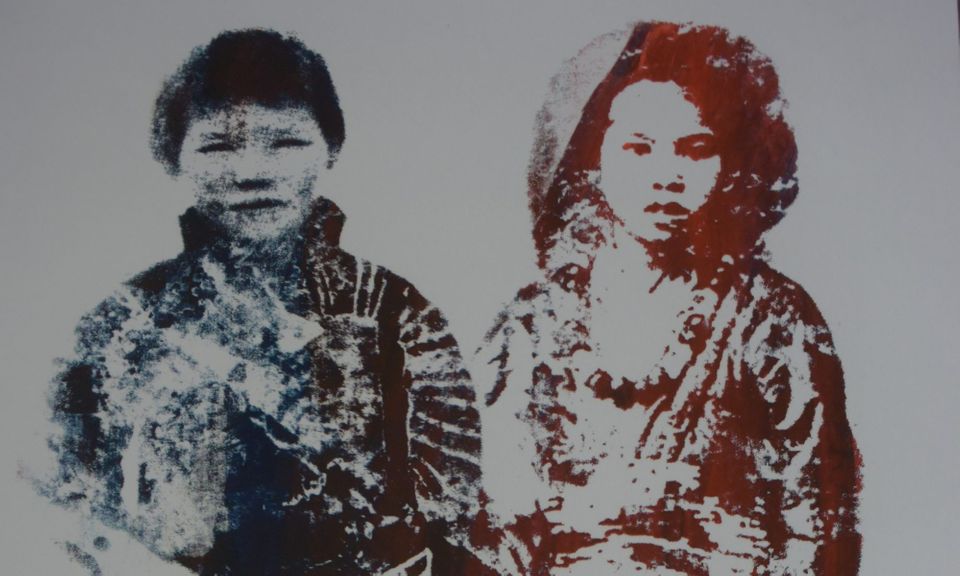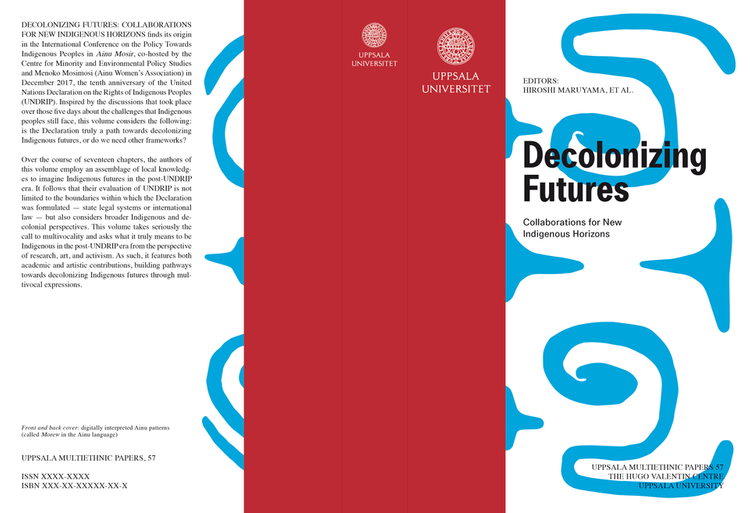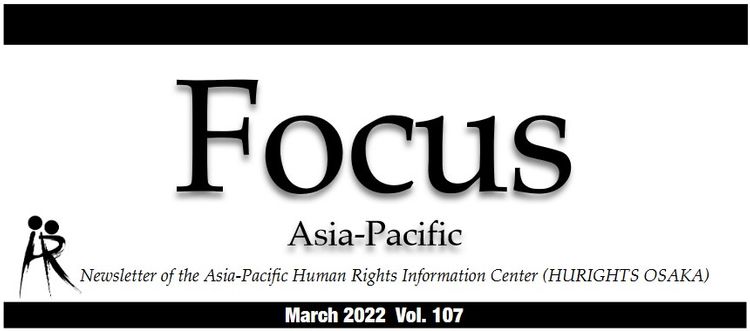CEMiPoS Statement on the Opening of the Upopoy

Download the statement as a PDF here.
Japan has a number of national museums officially endorsed by the government and intended to display and celebrate the ideals of Japanese culture. While most of these museums are concentrated in the prominent locales of the historically-privileged Kansai region, predominantly congregating in the cities of Kyoto, Osaka and Tokyo, on 12 July 2020 the national museum conglomerate will welcome its newest and most northern addition in the town of Shiraoi, Hokkaido.
Dubbed the Symbolic Space for Ethnic Harmony, the newest national museum marks a deviation from its predecessors, in that the stated objective is not the display and celebration of Japanese culture but rather that of the Ainu people, who are Indigenous to the northern island of Hokkaido. The site has also been promoted by the name Upopoy, which means “singing together as a large group” in the native Ainu language. Proponents of the museum have advanced the project as one which celebrates the multiculturalism of the country and seeks to preserve the Ainu culture, which has been depicted as “on the verge of extinction.” [i] However, Ainu activists and allied advocates have consistently critiqued the plans of the museum as well as its underlying narratives concerning the position of Ainu culture within Japanese society, in addition to the policy measures that have contributed to the genesis of the Symbolic Space. From these perspectives, the establishment of the museum represents the continued infringement on the rights of the Ainu as an autonomous Indigenous community and maintains a history of exploitation unto their people, lands, and culture. At the Centre for Environmental and Minority Policy Studies, we stand in solidarity with the Ainu community and condemn the opening of Upopoy. In the following statement, we outline our criticism of the museum from a number of different angles to assert that the museum is in fact another instance of ideological exhibition for the Japanese nation and has not been developed in the interest of the Ainu. Furthermore, many aspects of the museum infringe upon the rights of the Ainu as an indigenous people as determined by international convention. Therefore, the official opening of the museum should be seen as a bleak moment in which the historical trajectory of Japanese colonialism and exploitation of the Ainu has been allowed to continue.
Historical Foundations of Upopoy
The history of Upopoy, or the Symbolic Space for Ethnic Harmony, cannot be understood outside of a broader context of the history of Ainu-Japanese relations. The Ainu and the Japanese had maintained trade-based and political relations for centuries, though by the late 17th century these came to be characterized by unequal practices which privileged Wajin, or Japanese, parties. In the late 19th century regulations were unilaterally enacted by the newly-formed Meiji government to incorporate Ainu territories under colonial strategies largely inspired by Western imperial powers. As part of a scheme to enhance the economic and political prosperity of the nascent Japanese Empire, Ainu livelihoods were interrupted as populations on Hokkaido, Sakhalin (Karafuto) and the Kuril Islands were forcibly conscripted into the projects of Japanese statecraft. This often resulted in their involuntary relocations and displacement to accommodate Wajin settler populations by giving them the most fertile lands in the regions, dislocating Ainu to less prosperous zones. This process was formalized by assimilationist policy measures which prohibited and criminalized aspects of Ainu life, banning their language, dress, and subsistence practices such as fishing, hunting, gathering and farming on their lands. The influx of Japanese settlers and industry drove overfishing, overhunting, and exploitation of forests and other bioregions, and consequently depleted many of the resources which have formed the basis of Ainu subsistence– also having detrimental effects on autonomous Ainu institutions. It was against this backdrop of declining Ainu circumstances that the colonial Meiji regime passed the Former Aborigines Protection Act in 1899. The increasing state of destitution faced by the Ainu in the wake of settler-colonialism contributed to an enduring discourse around the idea that they are a people to be “protected,” implying that the Japanese are in a superior position to administer such protective measures (and, in the process, obscuring their complicity in the causes of destitution). The narrative of a protective, paternalistic, and unilateral relationship from the Japanese to the Ainu also took concrete forms. Most notably, the colonial government “gave” lands to the Ainu following the Wajin settlement on their own territories. However, as stated above, since the most viable areas had been allocated to Japanese projects and industry, “protection” for the Ainu meant that they were “given” the least preferable land allotments. Thus, the “protection” administered by the Japanese government over the Ainu has been the basis from which subsequent generations of impoverishment and widespread social stigma have been normalized in mainstream Japanese society. These detrimental acts of “protection” have propagated under the guise of benevolence on the part of the Japanese government– a course of action echoed in the opening of Upopoy.
The 1899 Former Aborigines Protection Act remarkably stayed in effect (albeit nominally) until May of 1997, when it was officially replaced by the Ainu Cultural Promotion Act. This novel policy had a narrowly-focused gaze into a rigidly-defined and static image of Ainu culture and blatantly ignored the long-standing demands of Ainu activists for respect and acknowledgement of their land and political rights [ii]. Ainu Culture, under the ethos of the 1997 Act and its political instigators, was more of a historical relic to be preserved rather than an element of the lives of autonomous, enlivened people. Under this gaze, it was legibly “exotic” features of Ainu life such as dance, song, and craft which were recognized and protected as “culture.” For its part, “protection” has emerged synonymous with commodification, as the cultural markers of difference for the Ainu have been thoroughly commercialized through the tourist market of Hokkaido.
In 2007, Japan joined 144 other countries in ratifying the United Nations Declaration on the Rights of Indigenous People, or UNDRIP. The Declaration is characterized by clauses which stress the obligations of signatory states to facilitate the realization of the sovereignty of indigenous peoples and their lands, and to take measures to correct, reconcile, and provide reparations for instances of historical exploitation and colonization. Japan’s signing of UNDRIP would set a course for subsequent Ainu-Japanese relations, although representatives of the latter group would dominate the direction of the agenda. The Japanese Diet established an Advisory Council for the Future of Ainu Policy, which notably featured a single Ainu representative [iii]. The Advisory Council was tasked with charting a multi-year plan to realize the “cultural pride” of the Ainu. In addition to taking preliminary steps to envision a New Ainu Law to replace the 1997 Cultural Promotion Act, the Advisory Council declared it would take “concrete measures” to realize the “cultural distinctiveness” of the Ainu people. These concrete measures did indeed refer to the concretization of the discourse of Ainu people as culture as opposed to autonomous political agents, and referred to the “development of the ‘symbolic space for ethnic harmony.’” [iv]
As mentioned above, the Advisory Council for the Future of Ainu Policy was charged with setting the groundwork for a replacement to the 1997 Act. On 24 May 2019, the Ainu Policy Promotion Act became effective following implementation by the Japanese Diet [v]. The Ainu Policy Promotion Act is most notably differentiated from its 1997 predecessor by way of its first and second articles, which officially recognize the Ainu as an ‘indigenous’ group for the first time in an official government policy. However, in the remaining articles of the new law, the Ainu are referenced as an ethnic group, a severe shortcoming highlighted by critics who note the stark distinctions between the legal designations of indigneous peoples and ethnic groups. The former category would recognize the political implications of collective rights based on original occupancy in a territory, provisions not accommodated in the status of ethnic minorities. Rather, the Ainu Policy Promotion Act focuses most predominantly on the promotion and protection of Ainu culture and “the importance of the diversity that ethnic groups contribute to society.” [vi] The Ainu Policy Promotion Act has therefore been interpreted as a widely symbolic gesture which does little to substantially alter the norms established by the 1997 Act and does not facilitate the realization of the Ainu’s rights as guaranteed by UNDRIP. Though the new law provides low prospects for genuine political reform, its symbolic nature is quite apt as Article 7 of the law once again stipulates the establishment of the Symbolic Space for Ethnic Harmony.
A number of articles in UNDRIP (articles 18, 19, 20, 31, 33, 34) outline the rights of Indigenous people to have autonomous voices and authority to determine the representation and development of their institutions and cultures. The Symbolic Space for Ethnic Harmony has been undergirded by meagre attempts to include Ainu voices in its planning and implementation, and Japanese perspectives have been given preference in the establishment of the museum. Once again, the emphasis of the museum’s exhibitions have been on fixed notions of culture. Representatives of Upopoy have furthermore suggested that descriptions of the history of Japanese colonization will be absent from the museum. In a press conference on 10 July 2020, the Minister of Education, Culture, Sports, Science, and Technology, Hagiuda Koichi was asked how the museum would depict the history of discrimination against the Ainu. His response reveals the official stance to be implemented within the Symbolic Space for Ethnic Harmony:
Supposedly there were different values between the Aborigines and the Japanese. I maintain a distance from the opinions that these different values should be recorded as discrimination against the ethnic minority by the majority. If there is a negative or sad history of the relationship between the aborigines and the Japanese peoples, it is of importance that memorial keepers tell it or record it at Upopoy. I do not deny it and I will not close my eyes to it. However, the efforts of the museum are to promote the positive aspects of the Ainu culture in a way that is future-oriented.
In response to these remarks by Hagiuda, Kimura Fumio, a distinguished Ainu activist and political leader, has expressed that the sentiment continues a pattern of historical revisionism espoused by Japanese conservative elites. For Kimura, the views stated by Hagiuda are in line with the tone set by past politicians such as the former Prime Minister Nakasone and Deputy Prime Minister Aso, both of whom denied the existence of indigenous populations in Japan. For activists and Ainu citizens like Kimura, Upopoy is merely the materialization of the empty, platitudinal measures taken by elites to participate in a discourse around indigeneity for the sake of political grift, whilst altogether ignoring the issues and inequalities which persist for indigenous individuals and communities. Upopoy does not fulfill the stipulations of UNDRIP, though it has been crafted superficially along with the New Ainu Law to sidestep the real issues of concern to the Ainu. This is perhaps demonstrated most succinctly with a primary feature of Upopoy: a memorial hall which will consolidate thousands of Ainu human remains.
The Memorial Hall: A Concrete Violation of Ainu Dignity
The blueprints for the Upopoy complex have been drafted around central purposes of educating the public on Ainu culture, and to facilitate the “building of a forward-looking, vibrant society with a rich, diverse culture in which indigenous people are treated with respect and dignity, without discrimination.” [vii] To purportedly achieve this mission, three central components structure the design plans of the park. The first is the concentrated National Ainu Museum building, a conventional interior building with exhibition rooms, a theater, a library, and, of course, a museum shop. The second component of Upopoy is a “National Ethnic Harmony Park,” an open-air ethnographic complex featuring reconstructed Ainu dwellings and areas for performance. The third central feature of the Upopoy plans, however, has been the most problematic and controversial: a “final resting place” [Irei Shisetsu] for thousands of Ainu human specimens which have been extracted from original burial grounds by researchers affiliated with universities and research institutions across Japan [viii].
In the late 19th and 20th centuries, Japanese-Ainu relations were colored by eugenic theories which propagated throughout much of the colonized world. Growing ethno-nationalist sentiment in the early Japanese empire contributed to institutionalized pursuits to simultaneously define the Japanese race by way of differentiating the other populations that came under its imperial reach. The 1930s saw the establishment of the Japan Society for Racial Hygiene, which was responsible for the initial systemic excavation of hundreds of Ainu bodies from their intended resting places. Additionally, prominent researchers of anatomy at Hokkaido Imperial University (now the University of Hokkaido), Yamazaki Haruo and Kodama Sakuzaemon, led research trips in which they subjected thousands of living Ainu to anatomical measurements, often as demonstrations in front of classes of medical students [ix]. This period cast the foundation from which the Ainu bodies were not only thoroughly racialized but also classified as suitable research objects, whether living or dead. In subsequent decades, researchers took it upon themselves to excavate Ainu graves without the free, prior, or informed consent of Ainu residents or relatives of extracted remains.
As a result, over 1600 Ainu human remains have since been excavated, collected, and held in repositories across research institutions in Japan with a number also circulating internationally. Since the 1980s, Ainu activists have initiated legal battles to reclaim their ancestral remains in addition to a large depository of cultural artifacts which were also excavated from gravesites. Requests for the return of ancestral remains back to their original resting places have been met with disdain from universities and other research institutions. Information pertaining to the catalogs of research specimens have often been obscured from Ainu claimants who are trying to locate the remains of their relatives or community members. Though a number of lawsuits reached a settlement which saw the return of ancestral remains to their intended resting sites [x], the majority of Ainu human remains have been maintained by research institutions and Ainu individuals and families trying to reclaim ancestral remains have been repeatedly met with barriers to repatriation.
Article 12 of UNDRIP states that “States shall seek to enable the access and/or repatriation of ceremonial objects and human remains in their possession through fair, transparent and effective mechanisms developed in conjunction with indigenous peoples concerned.” [xi] Given the widespread outcry of Ainu citizens for the return of human remains which, since 1980, has taken the form of numerous legal battles, the Japanese government has failed to provide mechanisms which would establish mechanisms for the repatriation of the Ainu human remains under the consultation and guidance of Ainu actors. When the Ainu Policy Promotion Act was enforced in May 2019, Ainu organizations and individuals were given a deadline of 25 October 2019 to initiate an application process for ancestral repatriation. After that date, all unclaimed remains were slated to be consolidated in the mausoleum at the planned Upopoy complex. However, the application process was not streamlined and many Ainu saw the parameters to the repatriation process as another barrier bolstered by the research agenda of Japanese scientists. Speaking to the Citizens’ Alliance for the Examination of Ainu Policy in April 2019, Hirata Tsuyoshi made the remark that “the Ainu have spent over thirty years, since the 1980s, waiting for the right to repatriate our ancestral remains. Why now are they ordered to fulfill an application process before October?” [xii]
Therefore, the opening of the Upopoy complex, including the memorial hall for Ainu ancestral remains, is an infringement both upon the direct wishes of many Ainu voices as well as the international conventions to which Japan is obliged. Notably, racially-infused research is still underway in Japan, with researchers claiming that genetic research on Ainu specimens is in the best interest of the indigenous people and their identity [xiii]. Many then presume that the consolidation of Ainu human remains in the memorial hall at Shiraoi will actually facilitate and streamline research, although the measure is being enacted under the precept of fulfillment to the Ainu’s indigenous rights. Just days before the formal opening of Upopoy, Shikada Kawami, former curator of the Asahikawa City Museum summarized a sentiment shared by many regarding the establishment of the complex:
Upopoy looks like another instance of the Japanese exerting their power over the Ainu. Stolen Ainu human remains have been collected in the memorial building there. The collection benefits Japanese researchers but doesn’t alleviate the profound sorrow held by many grieving families. Some Japanese people blame us Ainu for wanting more besides Upopoy. In other words, they say that we should be satisfied and grateful for Upopoy. I don’t know how many Ainu are aware of the degree to which they are still exploited and discriminated against. I think we should study our culture, our language, our history and legitimate human rights more.[xiv]
“Protecting the Ainu”: Conserving National Ideology
At the beginning of this statement, we noted that at first glance Upopoy presents a novel institution in the network of officially-sanctioned Japanese national museums, in that it is the first national museum which does not feature Japanese culture as a focal point. However, we at CEMiPoS state that this depiction is misleading, and the specific representation of the Ainu pursued in the development of the project still casts the Japanese voice as dominant and exclusive.
Structuring the ethos of the complex in addition to its promotional materials is a stringent meta-narrative which supports the depoliticization of Ainu indigeneity as having merely cultural dimensions. Upopoy is not a site that has been created to support the political legitimacy of the Ainu; instead, the project should be seen as an apparatus which further exacerbates the political identity of the Japanese at the expense of the Ainu’s rights as an indigenous community. This agenda is propagated by the language that is used to describe the Ainu people and their culture as well as the overall mission of Upopoy. A promotional pamphlet from 24 August 2019 described the purpose of Upopoy as seeking the revival of the Ainu culture, “an invaluable culture in Japan that’s on the verge of extinction.” [xv] An updated description on the current Upopoy website extends this attitude to state that the Ainu culture “remains under threat.” [xvi]
As indicated by the remarks made by Hagiuda on 10 July, the museum has no intention of describing the historical context of this enduring threat to Ainu culture or addressing Japanese colonialism at all. The language of extinction provides an impression that the Ainu are something of a dying species, which distorts the reality of the tens of thousands (and possibly many more) Ainu who are alive and continuously fighting for their political rights and against enduring social stigmatization and widespread discrimination. This is not abated by the fact that these descriptors of Ainu culture are typically accompanied by an emphasis to the notion that Ainu culture has been “cultivated amidst nature.” These rhetorical patterns detemporalize the Ainu and do not do justice to the diversity of contemporary Ainu life, in which many live modern, urbanized, lives in Japan and abroad. This essentializing depiction of the Ainu likewise does not leave much room for the diverse interest of Ainu actors across Hokkaido and beyond. For example, it does not accommodate the spectrum of Ainu political interest groups across Japan, with varying regional concerns. Forced into a status as relics of nature, Upopoy does not provide a platform to showcase the modern and progressive leadership of Ainu individuals and communities, such as the Monbetsu Ainu Association, the Ainu Women’s Association or the many contemporary Ainu artists active worldwide.
However, this de-temporalization of the Ainu as a type of “ecological noble savage”–- a trope seen imposed on many indigenous communities around the world–- is complementary to the policy-based strategies pursued by the government which places an uneven emphasis on a static definition of culture and avoids the political rights of the Ainu [xvii]. As a culture on the verge of extinction – as opposed to a robust collective composed of enlivened individuals – the Ainu, like a natural resource, are a thing to be conserved. Moreso, the relegation of Ainu life to dehumanized relics provides an easy channel to the commodification of their culture. The living stories of Ainu people are hidden behind the museumification of Ainu life, in the preservation of “exotic” song and dance, and the continued research on the objectified ancestral remains. In this way, the newest addition to the Japanese national museums is not so different from its predecessors; Upopoy is yet another opportunity for Japan to exploit the Ainu as a cultural resource and place it on display in support of a national narrative of Japaneseness. In this instance, the Japanese ideal touted is one of benevolent conservation of humans-as-artefacts. There is no room for Ainu humanity in Upopoy, nevermind their self-determination and other inherent rights as indigenous peoples.
Following these considerations, CEMiPoS condemns the opening of the Upopoy complex as a regression further into the colonial legacy which has endured over the Ainu people for generations. We stand in solidarity with our Ainu friends, neighbours, associates, and collaborators to work towards a future in which the expressions of Ainu rights are not merely symbolic gestures, but are the manifestation of Ainu desires for an Ainu future.
[i] Upopoy promotional pamphlet from August 2019: https://ainu upopoy.jp/download/files/pamphlet_en.pdf
[ii] See Morris-Suzuki 1999 for a detailed description of the passing of the 1997 Act. https://www.culturalsurvival.org/publications/cultural-survival-quarterly/ainu-beyond-politics-cultural-coexistence
[iii] See Morris-Suzuki 2018: https://apjjf.org/2018/21/Morris-Suzuki.html
[iv] From the “Final Report” of the Chief Cabinet Secretary for the Advisory Council for the Future of Ainu Policy (2009) https://www.kantei.go.jp/jp/singi/ainu/pdf/090629report_e.pdf.
[v] https://kanpou.npb.go.jp/old/20190426/20190426g00087/20190426g000870005f.html
[vi] https://www.loc.gov/law/foreign-news/article/japan-new-ainu-law-becomes-effective/
[vii] https://ainu-upopoy.jp/en/about/
[viii] See Morris-Suzuki 2018 https://apjjf.org/2018/21/Morris-Suzuki.html
[ix] Maruyama and Charbonneau 2020, forthcoming.
[x] Perhaps the highest profile case is that of Ainu repatriation activist Ogawa Ryukichi: Ogawa, Ryukichi. 2013. “Ainu Ikotsu Henkan Sosho Dai 3 Kai Koto Benron ni okeru Iken Chinjutsu [A Statement for the Lawsuit for the Repatriation of Ainu Human Remains at the Third Hearing in Sapporo District Court]” Research Group for Declassified Documents of Hokkaido University Newsletter No.3, 2013, 1-3.
[xi] United Nations Declaration on the Rights of Indigenous Peoples https://www.un.org/development/desa/indigenouspeoples/wp-content/uploads/sites/19/2018/11/UNDRIP_E_web.pdf
[xii] Maruyama and Charbonneau 2020, forthcoming
[xiii] CEMiPoS has collaborated with the Hokkaido Television Broadcasting Company (HTB) to produce a documentary highlighting this narrative in light of the ongoing legal battles headed by Ainu activists. The film can be found at this link: https://cemipos.org/2019/02/28/stolen-lives-the-struggle-to-reunite-ainu-families-by-htb/
[xiv] Shikada Kawami, 9 July 2020
[xv] https://web.archive.org/web/20190824214739/https://ainu-upopoy.jp/download/files/pamphlet_en.pdf
[xvi] https://ainu-upopoy.jp/en/about/
[xvii] The term ‘ecologically noble savage’ was coined by Kent Redford in 1991.




